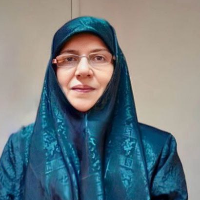An Explanation of Avicenna’s Rationalism in the Process of Inventing Geometric Patterns in the Architectural Decoration(Case Study: Five Tombs of the Seljuk)
Traditional motifs as an integral element of traditional Iranian-Islamic architecture are spiritual, symbols benefiting from the principles of geometry and mathematics. with the Seljuk’s reign over Iran and resulted from their increasing attention to science, philosophy, and art. Undoubtedly, the scientific and philosophical discourse prevalent in each historical period affects other aspects of society, including culture and art such as the Islamic rationalist philosophy that culminated in Avicenna’s thought of the subject. He believes that “invention” has come up with “internal senses” or “faculties of the soul”, especially the faculty of reason. Therefore, the hidden aspect of rationalism can be deliberated in the process of creating traditional motifs.
The current article aims at analyzing and explaining the hidden aspects of rationalism in the process of creating geometric motifs in Seljuk architectural decorations; which will eventually lead to the explanation of a theory on the rational invention of geometric motifs based on Avicenna’s theories. Therefore, the current paper starts with posing the question of how the components of Avicenna’s rationalism can be explained in the process of creating geometric motifs in Seljuk tomb architecture.
This is basic research. Data were collected from library sources and observational documents. This is a descriptive-analytical essay. Thus, geometric motifs and knots have been deliberately selected in the decorations of the five Seljuk tombs.
The design and application of motifs in the architectural decorations of the Seljuk period, based on Avicenna’s theories, are an “innovation” type and “rationalistic” process. In other words, the interaction of the faculties of the soul is the guide for designing and creating geometric motifs from the stage of observing objects in nature, analyzing and combining them in the faculty of imagination, and organizing and creating designs and motifs in the faculties of reason. The rational feature of the images contributes to human knowledge and mutual understanding by the audience. Also, the unity and coherence of the components of the building have been maintained through motifs and designs, and the necessary rational planning, coordination, and organization have been done to achieve the desired perfection.
-
The Wisdom of Life from Ghazali and Schopenhauer’s Points of View
Elahe Rostami*, Foruzan Rasekhi, Narges Nazarnejad
Metaphysical Investigations, -
Enhancing Resilience Based on Teachings of Stoics and Rumi
Narges Nazarnejad, Zeinab Mirzapour *, Forouzan Rasekhi
The Mirror of Knowledge Journal,



